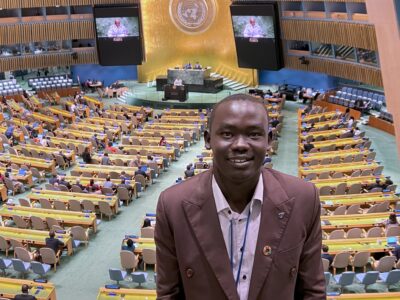
“Thank you firefighters!” shout the makeshift banners flapping down the I-5 corridor, snaking through southern Oregon and northern California. “Firefighters are our superheroes!”
This depiction, however, is one that is restricted only to the realms of fantasy. The men and women on the frontlines of raging wildfires, employed by the National Forest Service, are not considered firefighters outside of the hearts and minds of those they protect. Instead, the majority of these workers are placed within the federal classification of “forestry technician.”
Forestry technicians are employed as contractors, receive minimum starting wages of $13.50 hourly, and receive no off-season benefits. They are tasked with the grueling, traumatizing, and technically challenging job of defending our western cities from a burning planet, and yet are treated as disposable by the bureaucrats who hire them.

The first summer after my closest childhood friend worked a fire season in central Utah, he darkly joked to me, “They only call you a firefighter once you die.”
When tragedy strikes these crews, a senator might make an impersonal statement responding to the death of a crew member, thanking the young firefighters who put out the blazes threatening our country. Hollywood may write a B-list tearjerker chronicling the most devastating of fatalities, and thousand-year-old forests will burn for the first time in history. The federal wage for ‘forestry technicians’ may be bumped up by a few dollars an hour, and a president might call for better forest maintenance.
Climate change, and the threat of wildfire that accompanies it, is often equated to a great, existential war between the extreme forces of nature and humanity. Much like wartime commendations of the men and women fighting on the frontlines, wildland firefighters are celebrated as the last line of defense on the wilderness frontier. The hotshot firefighter is the mythologized warrior at the center of our war story, a soldier standing resolute against the rapidly changing conditions of the planet.
But the unspoken element is that war stories against fire often play out in the same way as on enemy lines: horrific accidents, unspeakable death by inferno. Gone too soon, says a friend of the family left behind; young children left parentless, a spouse at home widowed.
There may be memorials in our hometowns, a moving obituary in the local tribune, a flag hung at half-mast at the state capitol. There is a GoFundMe link, crowdsourcing support for families who will not receive federal resources or pensions. In the eyes of the federal government, the death of a mere seasonal contractor will not merit any further compensation.
The US Forest Service estimates that by 2015, the fire season had increased by at least two and a half months since 1970. By the fall of 2020, the sun failed to rise in San Francisco; nearly 10,000 fires had burned over 4.2 million acres of California, representing more than four percent of the state’s landmass, choking the skies with smoke.
Despite the growing, constantly looming threat of fire that plagues us for almost half the year, wildland firefighters receive only a $0.25 cent pay raise annually.
The camaraderie and skill built on tour, not the minuscule compensation, helps retain wildland firefighters season after season. But many must quit by 26, by which time they have dropped off their parents’ health insurance and can no longer work without benefits.
Federal crews do not receive health benefits in the offseason due to their part-time status — they are laid off after around six months of work each year and over a hundred hours each week. If spread over a year, their hours would equate to 48-hour weeks.
Wildland crews of ‘forest technicians’ work tirelessly for fortnight-long tours, with two-day breaks serving as time off in between. Travel to and from the fire, often throughout entire nights, does not count as time on the job; in effect, a wildland troop might find themselves spending weeks on tour, with one rest day on either end.
Next year, they celebrate the addition of a single extra day off in between.

The physical hazards of firefighting also stretch far beyond the ever-lengthening fire seasons. Wildland firefighters are exposed to more smoke inhalation than most individuals face in a lifetime; their risk for lung cancer is estimated to be between 8 and 43 percent higher than the general public, and cardiovascular mortality rates are 16 to 30 percent higher.
Moreover, the fire season is also psychologically brutal, with wildland firefighters constantly in the midst of immensely stressful and traumatic situations. Recent research has shown rates of binge drinking, probable PTSD, suicide ideation, and generalized anxiety disorders were between two and ten times higher among wildland firefighters than among the general public. In 2017, more firefighters committed suicide than died in the line of duty.
As patriots, these wildland crews will live this way until the tolls of the job make it physically improbable to continue. The more ambitious will turn to structural firefighting jobs to receive tangible benefits and pensions, much to the chagrin of their wildland superintendents. They will be ostracized from their stations and friends to seek stable employment, fair pay, and insurance. Some may avoid the post-traumatic stress that retired wildland forestry technicians have reported, but many will not. Even fewer will avoid the long-term physical effects of smoke inhalation.
If they are lucky, they will never be called firefighters at all.
Elena Klonsky is a student in Columbia Climate School’s MA program in Climate and Society.
Views and opinions expressed here are those of the authors, and do not necessarily reflect the official position of the Columbia Climate School, Earth Institute or Columbia University.



